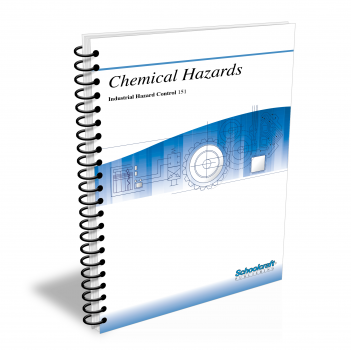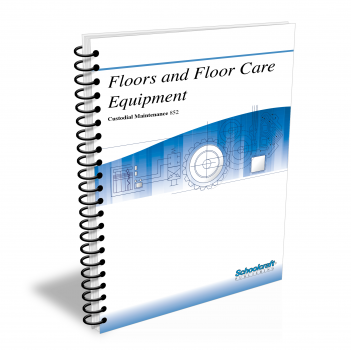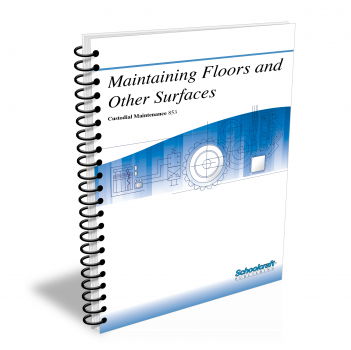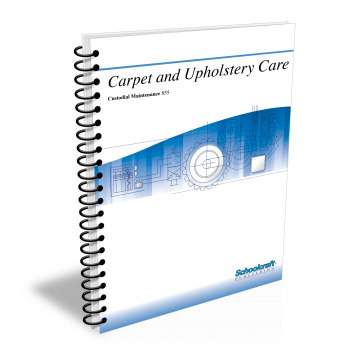Cleaning Chemicals
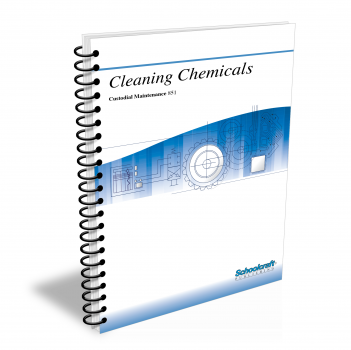
Course Number: 851
The Cleaning Chemicals textbook covers the safe use of cleaning chemicals, including the OSHA Hazard Communication standard. It covers the basic chemistry of cleaning chemicals, then explains the correct use of detergents, soaps, solvents, disinfectants, and other cleaning chemicals. Also included is an explanation of how chemicals are packaged, labeled, mixed, and applied in order to make working with chemicals safer and the worker more efficient.
Does your curriculum require additional topics not included in this textbook? Build a customized version of the Cleaning Chemicals textbook below.
Recommended Contact Hours – 8
Preview a Chapter
Available Supporting Material
- Table of Contents
- Exam Copies
- Suggested Titles
Table of Contents
Chapter 1: Using Chemicals Safely
Topics: OSHA Haz Com standard; MSDSs; Chemical hazards; Exposure routes; Controlling chemical hazards; Detecting exposure
Learning Objectives:
- Identify the goals of the Hazard Communication Standard and the agency responsible for writing and enforcing the standard.
- Explain the purpose and basic content of an MSDS.
- Give examples of the health hazard information contained in MSDSs and how it is used.
- Give examples of the physical hazard information contained in MSDSs and how it is used.
- Describe typical MSDS instructions on special precautions and procedures.
- Define chemical hazard and name the two categories into which they are divided.
- Name and describe the six kinds of health hazards.
- Name the three basic routes of health hazard exposure.
- Discuss common methods of controlling chemical hazards.
- Explain how to detect exposure hazards and symptoms.
Chapter 2: Introduction to Cleaning Chemicals
Topics: Cleaning chemicals, agents; Disinfectants; Selecting a product; Correct product use
Learning Objectives:
- List the three kinds of cleaning chemicals.
- Explain the advantages and disadvantages of soaps.
- Compare and contrast soaps and detergents.
- Tell what protective equipment is required when working with solvents.
- Explain how solvent and abrasive cleaners work.
- Describe the purpose of a disinfectant.
- List the important factors to consider when selecting a cleaning product.
- Tell where to find information about correct product usage.
Chapter 3: Cleaning Agents
Topics: Physical and chemical characteristics of cleaning agents; General-purpose cleaners; Strippers; Degreasers; Shampoos; Product selection
Learning Objectives:
- Name the chemicals in cleaning agents that dissolve grease and oil.
- Name and describe the four most important detergency processes.
- Define penetration, suspension, and viscosity as characteristics of cleaning agents.
- Tell how cationic soaps and detergents differ from anionic soaps and detergents.
- Name an advantage and a disadvantage of a multi-duty cleaners.
- Tell why wetting agents are used in degreasers.
Chapter 4: Disinfectants
Topics: Microorganisms; Controlling germs; Disinfectants; Product information; Preparing products for use; Cleaning and disinfecting
Learning Objectives:
- Define the term pathogenic.
- List four kinds of microorganisms capable of causing disease.
- Explain the difference between cleaning and disinfecting.
- List three factors that make killing germs a difficult task.
- Define the terms sanitization, disinfection, and sterilization.
- State an advantage and a disadvantage for each of the main kinds of disinfectant.
- Explain why it is important to follow product dilution information carefully.
Chapter 5: Special-Purpose Cleaning Chemicals
Topics: Bowl cleaner; Glass cleaner; Absorbents; Dust control chemicals; Furniture and metal polish; Hand soaps; Drain cleaners; Deodorants
Learning Objectives:
- Explain why it is necessary to use an acid bowl cleaner on toilets and urinals.
- List the characteristics of a good glass cleaner.
- Explain the purpose of absorbents.
- Explain where and why dust control chemicals are used.
- Give three reasons for using furniture polish on unsealed wood.
- List the properties of a good hand cleaner.
- Describe the necessary precautions to take when using drain cleaners.
- Name the three common forms of room deodorant.
Request Exam Copies
Exam Copies
Ready to see a copy of our textbooks? After selecting which textbooks you’d like to review for your course, you can submit your request by either logging in or creating an account so we know where to ship your exam copies. A representative from Schoolcraft will contact you to confirm and finish processing your request.
Exam copies are always free and yours to keep.
Selected Exam Copies
none selected
* Maximum of five copies can be ordered
